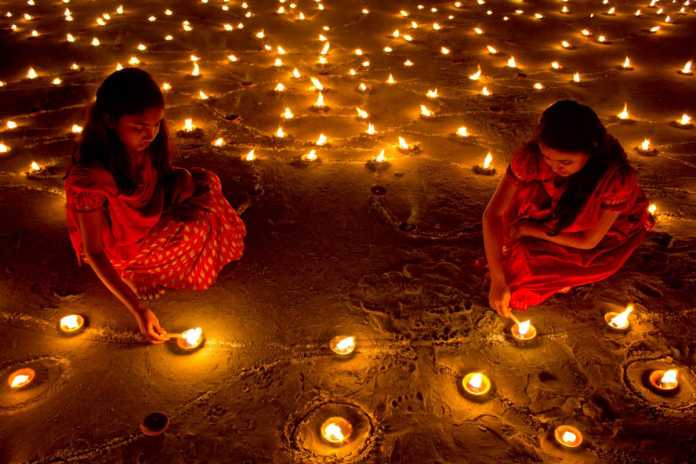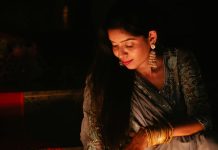The festival of colours, lights, food and mithai is finally here! And while you’re getting your much-deserved fix of Diwali goodies, have a look at some interesting facts about Diwali, some of which you might already know, and some that may totally surprise you –
- Diwali is celebrated by Hindus, Sikhs and Jains, and particularly marks the triumph of light over darkness, good over evil, and hope over despair. Derived from the Sanskrit word Deepavali (dip-light; avail-series/row), Diwali signifies a ‘series of lights’, which is why you will find lights on houses, temples, outside doors, windows and some even lighting up the insides themselves.
2. The significance of Diwali varies according to philosophy, beliefs, and myths. According to some, Diwali honours the return of Lord Rama from exile, while others believe that Diwali signifies the return of Pandavas after 12 years of Vanvas. However, the festival’s main celebration is honouring Goddess Lakshmi, the goddess of wealth and prosperity. The lights and lamps are known to be a way of helping Goddess Lakshmi find her way into people’s homes, as it is believed that she roams the earth on this day.
3. The festival begins two days before Diwali, particularly with Dhanteras kicking off the festivities. It is also a major shopping day, particularly for gold or silver articles, and merchants, traders and retailers stock up, put articles on sale, and prepare for this day. Diyas are kept burning all throughout the night as a Dhanteras ritual.
4. In some beliefs, Diwali is marked as the start of a new year. The day after Diwali is Padwa, the celebration of love between a husband and wife. Husbands give their wives thoughtful gifts, and newly married couples are invited to relatives and friends’ houses for a special meal. In some traditions, brothers go to pick up sisters from their in-laws’ home. Devotees also perform Goverdhan puja honouring Lord Krishna.
5. The final day of Diwali marks Bhai Dooj, which celebrates the relationship between brothers and sisters. Legend has it, that this was a day in historic times when brothers would travel far and wide to meet their sisters or bring their sister’s family over to celebrate with some seasonal harvests.
6. The festive occasion also marks kindness and peace. At the international border, Indian troops approach the Pakistani forces with offerings of traditional Indian sweets. The Pakistani forces return the gesture with some Pakistani sweets.
7. Bursting crackers forms a major part of Diwali traditions, but it also contributes to air pollution. In order to curb this, the Supreme Court has passed an order in which firecrackers can be burst only between 8 pm and 11 pm during Diwali.
8. Outside the Indian subcontinent, the largest Diwali celebrations are held in the city of Leicester in the United Kingdom. Their celebrations begin nearly a week before Diwali, with a ‘Lights Switch On’ ritual. The main day of Diwali sees 40,000 people gathered to witness the spectacular illumination of lights on Belgarve Road, followed by an exciting firework display. There are also various music and dance performances held. A ‘Diwali village’ on Cossington Street Recreational Ground, replete with performances, children’s rides, food and retail stalls. The days leading up to Diwali also sees a number of exhibitions, storytelling competitions and other events.





























